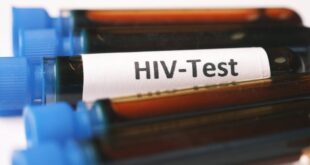Applying sunscreen. Credit: RF._.studio _, Pexels
In the wake of DIY skincare going viral on TikTok videos and health blogs, people are turning to home-made sunscreens to avoid harmful chemicals, save money or adopt a healthy lifestyle.
While it is possible to make sunscreen at home, dermatologists warn that there are serious dangers if you do not follow the instructions. Here’s everything you need to be aware of.
Why are people using homemade sunblock?
Online, DIY sunscreen recipes have been popular in recent years, particularly among those looking to avoid synthetic chemicals. Influencers, like Nara, have become viral for their homemade sun-care videos. These videos combine ingredients such as coconut oil, zinc oxide, and shea butter to create home formulas.
Other people prefer to use traditional methods such as beeswax (rendered animal oil), tallow and essential oils for skin care in the sun. What is the appeal? Saving money, controlling ingredients, and avoiding chemicals that are controversial.
Although homemade sunscreens may be beneficial to the skin, FDA-approved and EU-regulated products are better.
What makes a sunblock effective?
Sunscreens need more than natural ingredients to protect skin against sunburn, ageing and cancer.
According to Dr. Ellen Marmur of MMSkincare and dermatologist, she says, “A sunscreen that is effective and FDA-approved will prevent skin burning and keep it healthy and moisturized.” Byrdie.
In certain countries such as the US sunscreens are classified as drugs and therefore tested for:
- Broad-spectrum Protection (UVA + UVB).
- SPF levels (Sun Protection Factor)
- Stability of shelf life
- UV filters: safety and effectiveness
This testing is necessary to ensure that a homemade sunscreen mix provides reliable protection. In Spain sunscreens are not drugs but cosmetics. In Spain, sunscreens must conform to the EU Cosmetic Regulation.
Homemade sunscreen – a false sense or security?
Even if your homemade sunscreen contains a UV-blocker, such as non-nanozinc oxide, it can still suffer from:
- Uneven SPF distribution
- SPF not verified
- Uneven protection over time
- No water resistant testing
“The idea that you can make your own sunscreen is dangerous,” warns Dr. Marmur. “DIY sunblocks do not go through strict quality controls or any testing. There’s no way of knowing if they are blocking UV rays correctly.” (Byrdie)
Make your own natural sunscreen with this recipe
If you still want to try making your own sunscreen at home – perhaps best for casual, low-risk sun exposure – here’s a common recipe shared by the blog Hearty Sol:
Tallow-based sunblock (approx. 26–28 oz / 768 ml to 828 ml)
Ingredients:
- 1 cup tallow (rendered & strained)
- ½ cup coconut oil
- ½ cup cocoa butter
- ½ cup beeswax pellets
- ½ cup jojoba oil (or olive, almond, avocado oil)
- ½ cup non-nano zinc oxide (cosmetic-grade, uncoated)
- Optional:
- 1 tsp of raspberry seed oil
- ½ tsp carrot seed oil
- 20–30 drops essential oil
Instructions:
- Melt all butters, oils and waxes in a double-boiler.
- Remove from heat. Let it cool down.
- Add the zinc oxide gradually (without inhaling the powder).
- Add essential oils if using.
- Pour into jars and tins. Let cool.
Use:
- Apply a tiny amount before a brief sun exposure.
- Apply frequently, particularly after swimming or sweating.
- Store in a cool, dark place.
This recipe was not tested to determine SPF. You should not use it as a replacement for regulated sunblock for long periods of time in the sunlight.
Natural ingredients for making sunscreen at home
- Zinc oxide (non-nano), a physical UV blocker, is applied to the skin. It reflects UV rays.
- Raspberry Seed Oil: Sometimes touted as offering SPF 25–50, but scientific evidence is limited.
- Carrot Seed Oil is popular in natural cosmetics, but SPF protection has not been tested.
- Coconut/Olive Oil: Nourishing, but can have extremely low SPF (as low as 2–8) and should not be used alone.
Dr. Blair Murphy Rose, of the Skin Cancer Foundation warns that DIY sunscreens “provide either no protection against ultraviolet (UV), or very low protection”. Skin Cancer Foundation.
Some people might consider homemade sunscreen creams, even though dermatologists do not recommend it.
- For low-risk, everyday sun exposure (e.g. Ten minutes in the garden
- Certain commercial formulas can cause skin reactions in people with sensitive skin.
- Along with protective clothing, hats are also recommended.
“Sun protection is way too important to try an untested and unproven DIY version – DIY is fine when the stakes are lower,” says Dr. Hadley King. (Byrdie.)
Consider the following options if you want to avoid certain chemicals but still get sun protection:
- Mineral sunscreens (only zinc oxide or titanium dioxide)
- Options for sensitive skin that are fragrance-free
- Products marked “reef safe” (no Oxybenzone or Octinoxate).
- Broad spectrum formulas with SPF of 30 or more
“The most crucial thing is to choose a product that you feel comfortable using every day,” Dr. Murphy Rose says.
You can also visit our in-depth guide to the risks of some mainstream sunscreen ingredientsConcerns about oxybenzone, hormone disruption and other concerns are also raised.
I tried to use a homemade sunblock and found it too heavy, thick and white. However, the protection was good – it acted more like a sunblock and left a white sheen all over my skin for a few hours, even after being in the swimming pool. It is worth spending more money for some of the higher-end brands, which do not contain parabens or oxybenzone. I like a lighter and more invisible finish.
Would you use a DIY recipe for skin protection, or should science take the lead in this area? Tell us what you think.
View all Health and Beauty News.
 Costa News Spain Breaking News | English News in Spain.
Costa News Spain Breaking News | English News in Spain.





